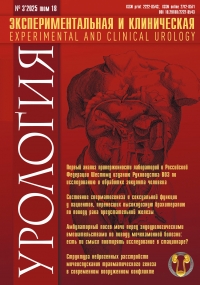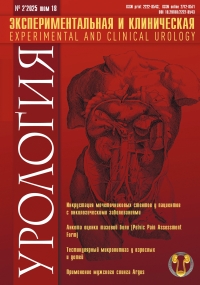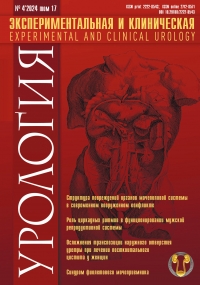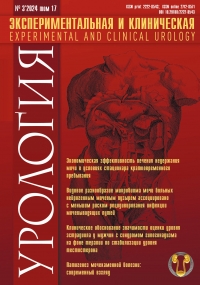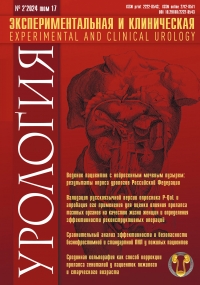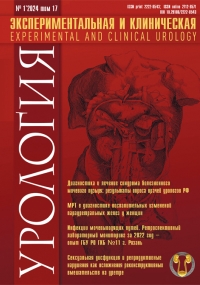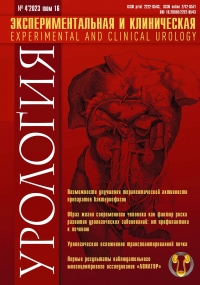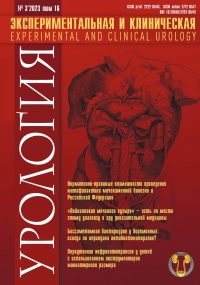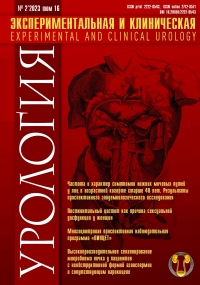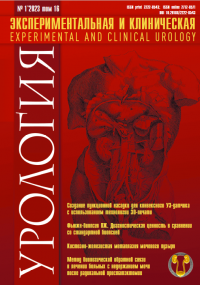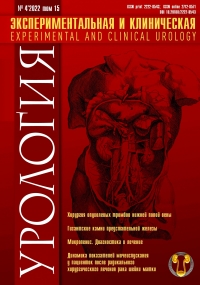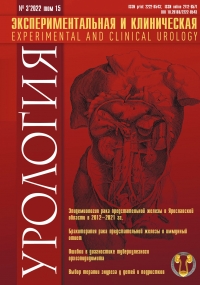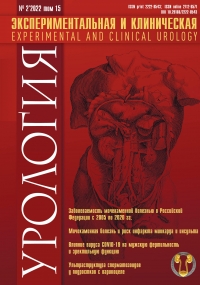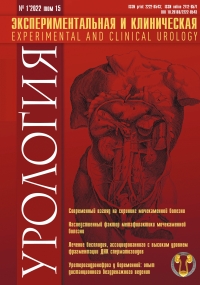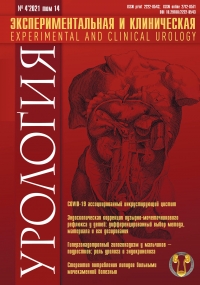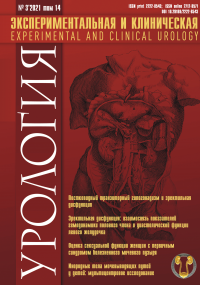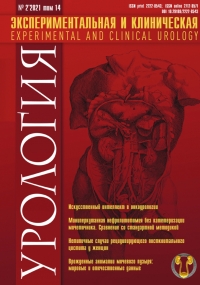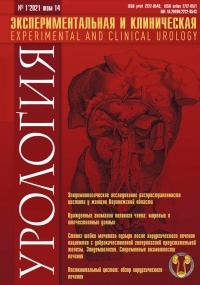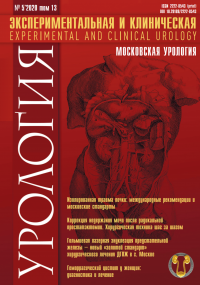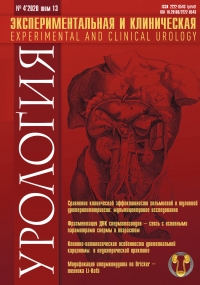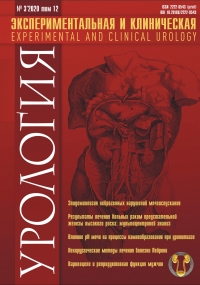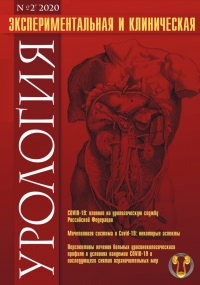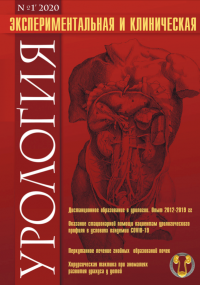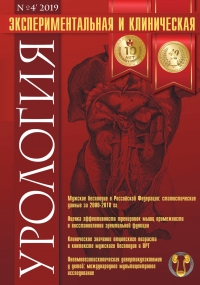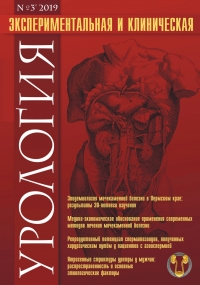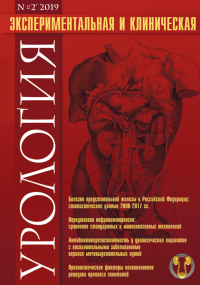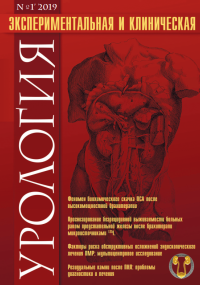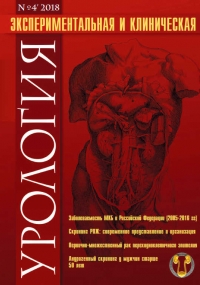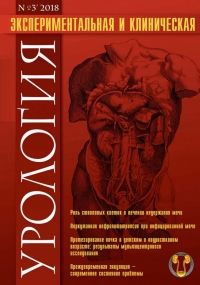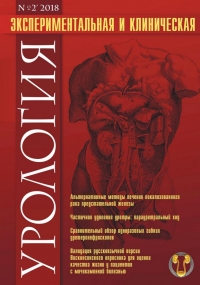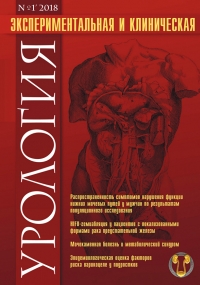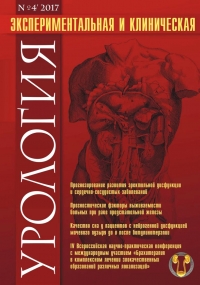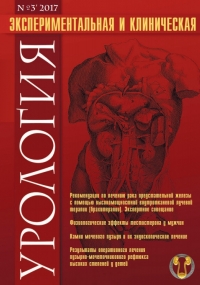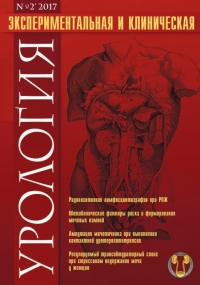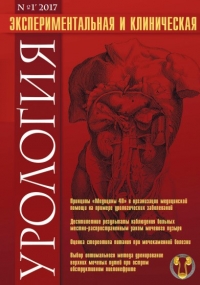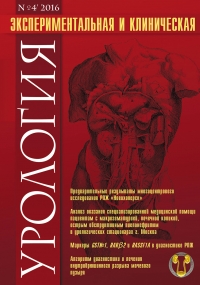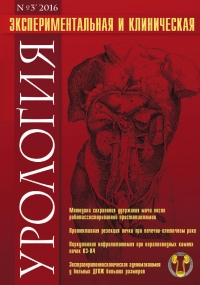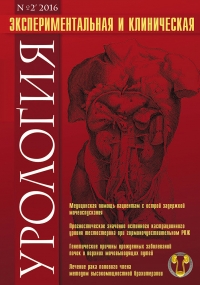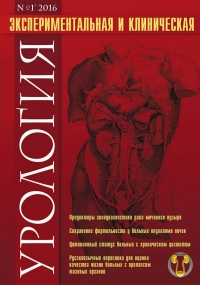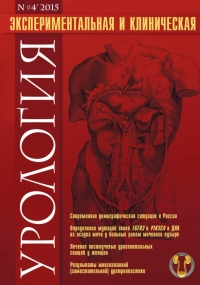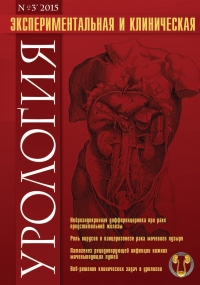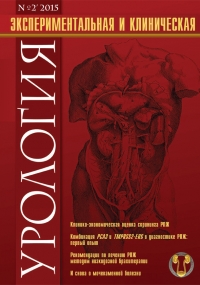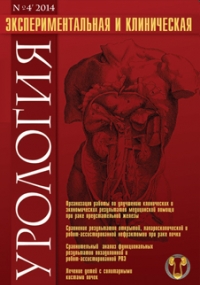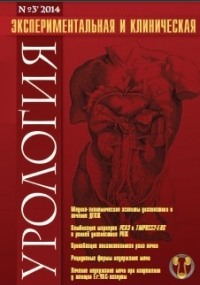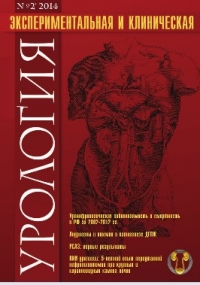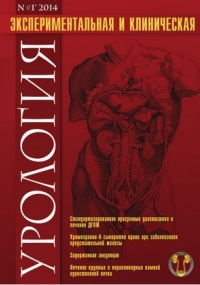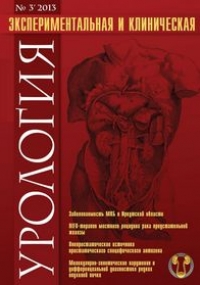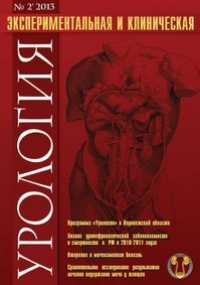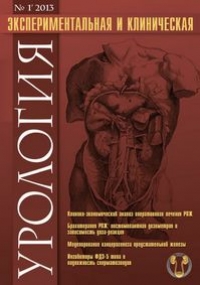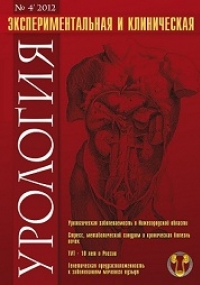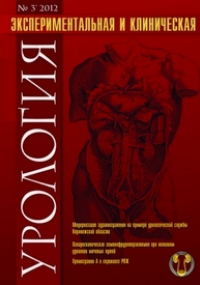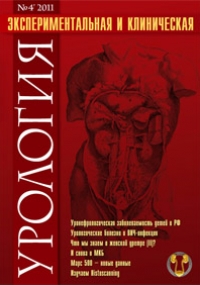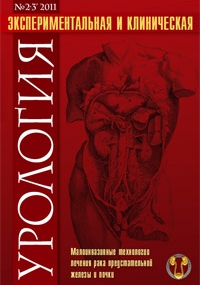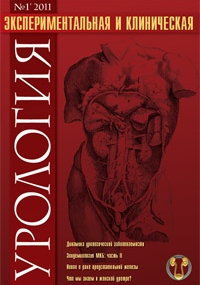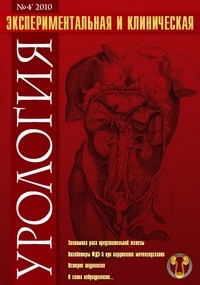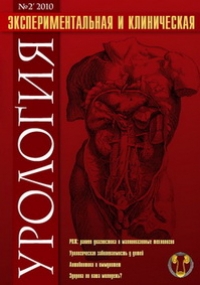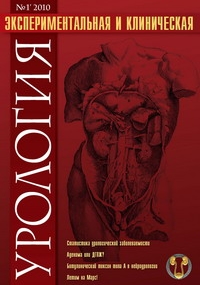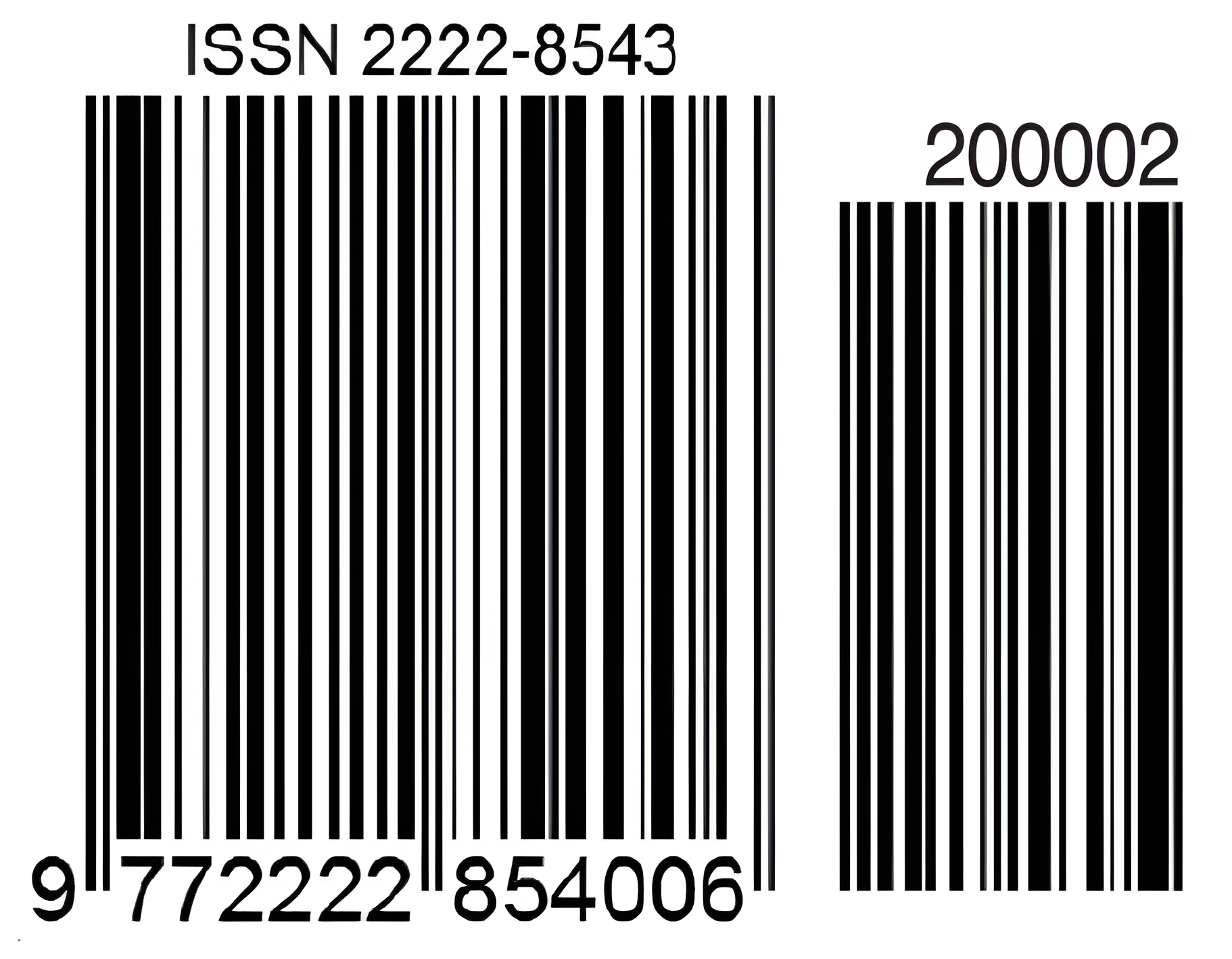The influence of hexane extract of Serenoa repens on remodeling of the bladder wall in partial bladder outlet obstruction DOI: 10.29188/2222-8543-2024-17-4-15-22
- Sivkov A.V. – PhD, Deputy Director of N. Lopatkin Scientific Research Institute of Urology and Interventional Radiology – Branch of the National Medical Research Centre of Radiology of the Ministry of Health of Russian Federation; Moscow, Russia; RSCI Author ID 622663, https://orcid.org/0000-0001-8852-6485
- Kirpatovskiy V.I. – Dr. Sci., professor, сhief scientific Researcher of N. Lopatkin Scientific Research Institute of Urology and Interventional Radiology – Branch of the National Medical Research Centre of Radiology of the Ministry of Health of Russian Federation; Moscow, Russia; RSCI Author ID 604441, https://orcid.org/0000-0002-4356-9200
- Efremov G.D. – PhD, head of scientific laboratory department of N.A. Lopatkin Scientific Research Institute of Urology and Interventional Radiology – Branch of the National Medical Research Centre of Radiology of the Ministry of Health of Russian Federation; Moscow, Russia; RSCI Author ID 637962, https://orcid.org/0000-0002-8822-8119
 480
480 Introduction. Clinical effectiveness of Permixon (HSRE) is associated with antiandrogenic, antiproliferative and anti-inflammatory action in the prostate gland. However, the published data also suggest the existence of a separate mechanism of HSRE action, that is realized in LUTS/BPH through influencing the function of the obstructive bladder (OB).
Materials and methods. The study was conducted on 37 white mongrel rats in which partial bladder outlet obstruction (BOO) was modeled by applying a ligature to the urethra. Animals of the I experimental series (n=16) received HSRE aqueous-alcohol suspension daily through a tube. Rats of the II control series (n=16) received similar volume of alcohol solution. Animals were withdrawn from the study after 2 and 4 weeks. Baseline values were obtained from 5 intact rats.
Results. After 2 and 4 weeks of BOO, obvious overdistension of the bladder and a significant increase of residual volume in series II were revealed (p<0,05). This was accompanied by the development of severe detrusor hypertrophy. After 2 weeks in series II, the detrusor thickness increased from 0,254±0,021 to 0,566±0,041mm, whereas in series I – to 0,801±0,052 mm (p<0,05), and a month later – to 0,897±0,053 and 1,328±0,047 mm, respectively (p<0,01). If in the intact rats the detrusor was 69.9% of the bladder wall thickness, then in series I after 2 weeks – 73,2%, after a month – 86%, and in series II – 69,3% and 74,4% (p<0,05). In group II, epithelial dystrophy was observed, with the presence of full nonepithelized zones, thickening of the submucosal layer and spasm of vessels. In the series I, there were no nonepithelized areas, the submucosal layer consisted of loose connective tissue with dilated blood vessels. In series II, the inflammatory infiltrate affected practically the entire wall of the bladder, especially after a month of BOO. In series I there were only focal infiltrates in the submucosal layer. The average indicators of inflammation severity according to the modified Irani scale turned out to be higher in series II, compared with I, both after 2 weeks and after a month. In the interval of 2-4 weeks in group II the activity of inflammation increased from 1,8±0,2 to 2,5±0,3 points, and in group I it increased slightly: from 1,2±0,1 to 1,5±0,2. In series II pronounced sclerosis of the bladder wall was revealed as a local foci and perimuscular sclerosis, while in series I only isolated small foci were found. The average area of sclerosis foci raised with increasing BOO duration in groups I and II: by 2 weeks up to 0,005±0,001 and 0,018±0,002 mm2; in a month – up to 0,30±0,02 and 0,53±0,03 mm2. In the I series after a month it remained significantly lower than in the control animals.
Conclusion. For the first time, a reliable protective effect of HSRE on the morphological bladder wall remodeling changes in rats as a result of BOO lasting up to 4 weeks was demonstrated. The influence of HSRE on BOO bladder demonstrates the complex mechanisms of action with the anti- inflammatory effect being dominant.
| Attachment | Size |
|---|---|
| Download | 5.37 MB |


